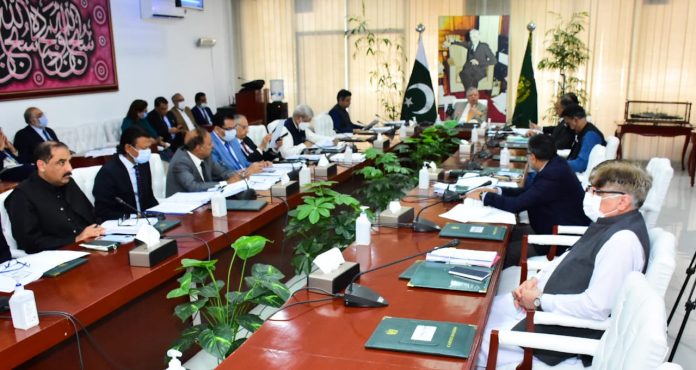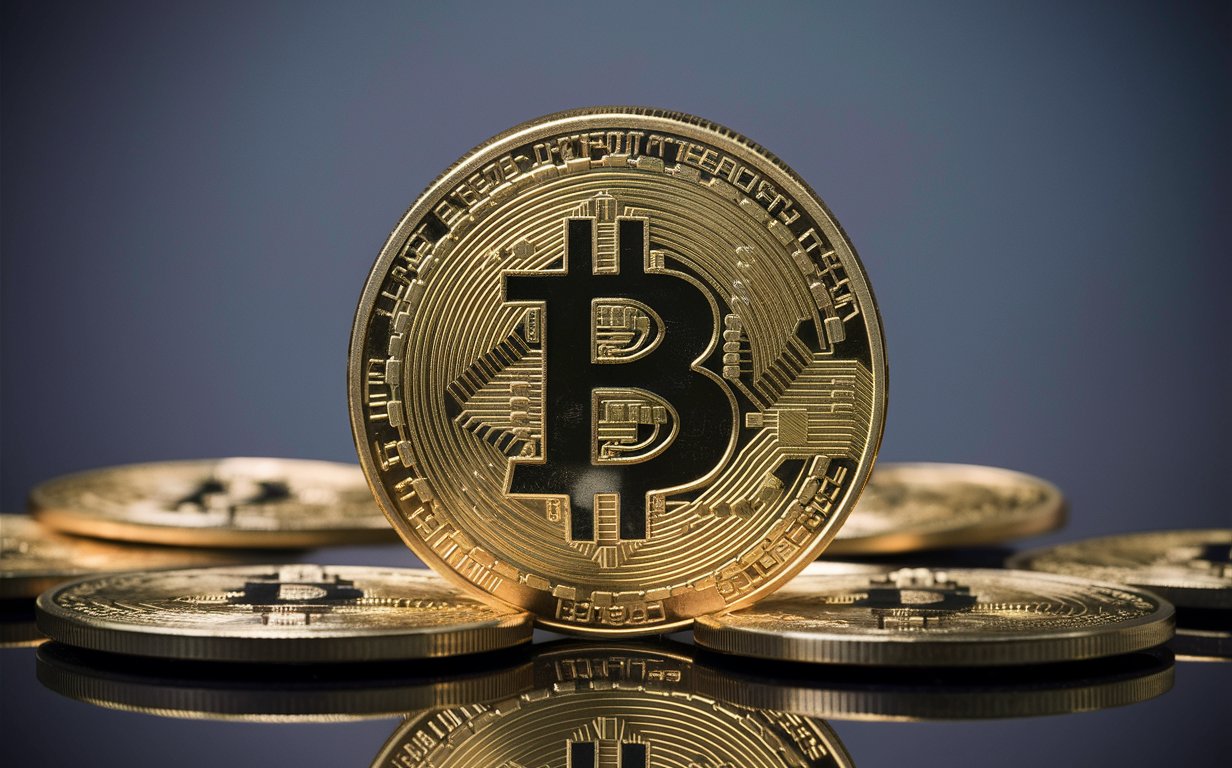Economy
ECC approves Rs 8.2 billion Ramzan Relief Package

The Economic Coordination Committee (ECC) of the Cabinet here on Tuesday approved in principle the Ramzan Relief Package -2022, involving subsidy of Rs8.2 billion.
The relief package, presented by Ministry of National Food Security & Research (MNFS&R) has been approved for the whole population of the country rather than only 20 million households registered with Ehsaas Rashan Riyat Programme with directions to frame procedural mechanism for limiting the interventions by each family.
The ECC meeting was presided over by Federal Minister for Finance and Revenue, Shaukat Tarin, according to press statement issued by the Finance Ministry.
The MNFS&R submitted another summary regarding intervention price for Cotton Crop (2022-23).
In order to revive cotton production in the country, bring stability in domestic market and assure fair return to the farmers, the ECC allowed Rs. 5,700/40 kg threshold intervention price of seed-cotton.
The ECC further allowed to initially procuring two million bales of cotton at intervention price with direction that quantity would be reviewed on monthly basis.
The ECC allowed Ministry of Economic Affairs to sign 15 debt rescheduling agreements with various credit countries, finalized under Debt Service Suspension Initiative (DSSI).
The committee also approved the proposal of Petroleum Division regarding issuance of sovereign guarantee amounting to Rs 21,000 million in favour of M/s Faysal Bank Limited at considerably lower markup rate for the remaining tenor of the loan i.e four and half years along with issuance of letter of comfort for new finance agreement with respect to pipeline infrastructure development project LNG-II.
On a proposal of Petroleum Division for re-allocation of OGDCL’s Jhal Magsi gas to SSGCL, the ECC allowed reallocation of 15 MMCFD Jhal Magsi gas to SSGCL.
The SSGCL would carry out the project of gasification of Jhal Magsi town and would embark the required gas out of the proposed allocation. The injection of this gas will help mitigate SSGC’s gas demand-supply deficit.
On a proposal of Petroleum Division for allocation of gas from Mari (Deep) gas reservoir to M/s SNGPL, the ECC approved in principle upto 110 MMCFD gas from Mari deep (Goru-B) gas reservoir allocation to SNGPL till 30-06-2024 on firm basis with direction for the determination of price mechanism of gas.
Meanwhile the Petroleum Division for addressing PSO and other Oil Marketing Companies (OMCs) concerns over mechanism of payment of Price Differential Claims (PDC) submitted a summary on revised mechanism with the change to the previously approved mechanism that the PDC will be applicable on sale of petroleum products rather than on procurement of products.
The ECC approved the proposal with allocation of additional Rs. 11.73 billion as supplementary grant to meet the expenditure on payment of PDC up to 31st March 2022.
ECC also approved Technical Supplementary Grant amounting to Rs. 200 million to Pakistan Military Accounts Department (PMAD) for conversion of Pensioners to Direct Credit System.
ECC also approved Technical Supplementary Grant of Rs. 3500 Million in favour of Higher Education Commission for the Project titled “Pak University of Engineering and Emerging Technologies (PUEET).
Among others, the meeting was attended by Federal Minister for National Food Security and Research, Syed Fakhar Imam; Federal Minister for Planning, Development and Special Initiatives, Asad Umar; Federal Minister for Economic Affairs, Omar Ayub Khan; Federal Minister for Industries and Production, Makhdoom Khusro Bakhtiar; Federal Minister for Energy, Hammad Azhar; Adviser to the Prime Minister on Commerce and Investment, Abdul Razak Dawood, federal secretaries and senior officials.
Crypto
Bitcoin Rebounds from Slump Triggered by Iran’s Attack on Israel: Analyzing Market Sentiment and Investor Reactions

Table of Contents
Introduction
On April 13, 2024, Bitcoin experienced a significant price drop following the escalation of tensions between Iran and Israel. The attack on Israel by Iran led to a sharp decline in the price of Bitcoin, causing concern among investors and market analysts. However, the cryptocurrency market has shown resilience, with Bitcoin rebounding from the slump, indicating a potential recovery in the market. In this blog article, we will analyze the impact of the geopolitical event on Bitcoin’s price, market sentiment, and investor reactions.

Impact on Bitcoin Price
The attack on Israel by Iran led to a significant drop in the price of Bitcoin, with the cryptocurrency experiencing a sharp decline in its value. According to CoinMarketCap, the price of Bitcoin dropped from $25,987.73 to $24,427.20 within a few hours of the news. This decline can be attributed to the uncertainty and fear among investors, as geopolitical events can have a significant impact on the global economy and financial markets.
Market Sentiment
The sudden drop in Bitcoin’s price led to a wave of panic among investors, causing a shift in market sentiment. According to data from CoinMarketCap, the market sentiment for Bitcoin shifted from “Neutral” to “Negative” within hours of the news. This change in sentiment can be attributed to the fear of potential economic instability caused by the geopolitical event.
Geopolitical Events and Bitcoin
Geopolitical events have a significant impact on the cryptocurrency market, particularly on the price of Bitcoin. In recent years, we have seen how events such as the Russia-Ukraine conflict, the COVID-19 pandemic, and the ongoing US-China trade war have affected the cryptocurrency market. The attack on Israel by Iran is just another example of how geopolitical events can cause volatility in the market.
Investor Reactions
The sudden drop in Bitcoin’s price led to a wave of panic among investors, causing some to sell their holdings in a bid to minimize their losses. However, other investors saw this as an opportunity to buy Bitcoin at a lower price, believing that the cryptocurrency would recover in the long run. This divergence in investor reactions highlights the inherent volatility of the cryptocurrency market and the importance of understanding market sentiment and geopolitical events.
Recovery and Future Outlook
Despite the initial decline, Bitcoin has shown resilience and has started to recover from the slump. As of the time of writing, the price of Bitcoin has rebounded to $25,537.95, indicating a potential recovery in the market. However, the long-term outlook for Bitcoin remains uncertain, as the cryptocurrency market is heavily influenced by geopolitical events and market sentiment.
Conclusion
The attack on Israel by Iran led to a significant drop in the price of Bitcoin, causing panic among investors and uncertainty in the market. However, the cryptocurrency has shown resilience and has started to recover from the slump. As we move forward, it is essential to monitor geopolitical events and market sentiment to understand the potential impact on the cryptocurrency market.
China
Navigating the Economic Transformation: China’s Future Depends on Microeconomic Policies

Introduction
China’s economic growth has been a significant global phenomenon, with its rapid expansion driving global trade and shaping the global economy. However, as China enters a new phase of its economic development, it faces challenges that require a shift in focus from macroeconomic stimulus to microeconomic policies. This article explores the importance of microeconomic policies in China’s future economic growth and the implications for businesses and markets.

I. The Limitations of Macroeconomic Stimulus
- Temporary Boost: Macroeconomic stimulus, such as government spending and monetary policy, can provide a temporary boost to the economy. However, it does not address the underlying structural issues that hinder long-term growth.
- Amplifying Economic Shortcomings: Macroeconomic stimulus can exacerbate economic imbalances and inefficiencies, leading to a more significant correction in the future.
II. The Importance of Microeconomic Policies
- Structural Reforms: Microeconomic policies focus on structural reforms that address the root causes of economic challenges. These reforms can include labor market reforms, regulatory changes, and infrastructure investments.
- Encouraging Business Transformation: Microeconomic policies can create an environment that encourages businesses to transform and adapt to changing market conditions. This can lead to increased productivity, innovation, and competitiveness.
III. The Role of Businesses in China’s Economic Transformation
- Adapting to Market Changes: As China’s economy evolves, businesses must adapt to new market conditions and consumer preferences. This may involve shifting from traditional industries to more innovative and technology-driven sectors.
- Embracing Innovation: To prosper in the new economic environment, businesses must embrace innovation and technological advancements. This can include investing in research and development, adopting new technologies, and fostering a culture of innovation.
IV. Implications for Markets and Investors
- Changing Market Dynamics: As China’s economic focus shifts from macroeconomic stimulus to microeconomic policies, market dynamics will change. Investors should be prepared for a more volatile and uncertain market environment.
- Opportunities for Investors: The shift to microeconomic policies presents opportunities for investors in sectors that benefit from structural reforms and business transformation. These may include technology, healthcare, and environmental sectors.
Conclusion
China’s future economic growth depends on its ability to navigate the complex transition from macroeconomic stimulus to microeconomic policies. This requires a focused effort on structural reforms, business transformation, and a shift towards innovation and technology. As China embarks on this transformation, businesses and investors must adapt to the changing market conditions and seize the opportunities presented by the new economic environment.
Economy
Understanding the Latest Inflation Figures: Causes, Consequences, and the Fed’s Response

Introduction
Inflation, the rate at which the general level of prices for goods and services is rising, has been a topic of concern for economists and policymakers alike. Recently, the US inflation rate has risen to 2.5%, according to the Federal Reserve’s preferred measure, the Personal Consumption Expenditures (PCE) index. This figure is in line with economists’ expectations but remains above the central bank’s target of 2%. In this blog article, we will delve into the causes of this inflation rise, its impact on the economy, the Federal Reserve’s response, and the potential future implications.
Causes of Inflation:
- Supply Chain Disruptions: The COVID-19 pandemic has caused significant disruptions in global supply chains, leading to increased demand for goods and services.
- Fiscal Policy: Government spending and tax policies can influence inflation by increasing the demand for goods and services, leading to higher prices.
- Monetary Policy: The Federal Reserve’s actions, such as adjusting interest rates, can impact inflation by influencing the supply of money and credit in the economy.
Impact of Inflation on the Economy:
- Consumer Prices: Inflation directly affects the prices consumers pay for goods and services, potentially reducing their purchasing power.
- Interest Rates: Central banks, like the Federal Reserve, may adjust interest rates to control inflation, which can impact borrowing costs and economic growth.
- Economic Stability: High and persistent inflation can lead to economic instability, as businesses and consumers struggle to predict future prices.
Fed’s Response to Inflation:
- Interest Rate Adjustments: The Federal Reserve has the ability to adjust interest rates to control inflation, which can impact borrowing costs and economic growth.
- Communication: The Fed communicates its monetary policy decisions and future expectations to the public, which can influence market expectations and economic behavior.
- Inflation Targets: The Fed has set a target inflation rate of 2%, which it aims to maintain over the long term.
Future Implications of Inflation:
- Monetary Policy: The Fed’s response to inflation will depend on its assessment of the current economic situation and future expectations.
- Economic Growth: High and persistent inflation can negatively impact economic growth, as businesses and consumers may reduce spending and investment due to uncertainty.
- Policy Coordination: Central banks, governments, and international organizations may need to coordinate their policies to address inflation and promote economic stability.
Conclusion
The recent rise in US inflation to 2.5% is a cause for concern, as it remains above the Federal Reserve’s target. Understanding the causes of this inflation, its impact on the economy, and the Fed’s response is crucial for policymakers and investors alike. By addressing these issues, we can work towards maintaining economic stability and promoting sustainable growth.
-

 Featured3 years ago
Featured3 years agoThe Right-Wing Politics in United States & The Capitol Hill Mayhem
-

 Elections 20242 months ago
Elections 20242 months agoAnalyzing Trump’s Super Tuesday Triumph and Nikki Haley’s Strategic Moves
-

 News2 years ago
News2 years agoPrioritizing health & education most effective way to improve socio-economic status: President
-

 China3 years ago
China3 years agoCoronavirus Pandemic and Global Response
-

 Canada3 years ago
Canada3 years agoSocio-Economic Implications of Canadian Border Closure With U.S
-

 Conflict3 years ago
Conflict3 years agoKashmir Lockdown, UNGA & Thereafter
-

 Democracy3 years ago
Democracy3 years agoMissing You! SPSC
-

 Democracy3 years ago
Democracy3 years agoPresident Dr Arif Alvi Confers Civil Awards on Independence Day























